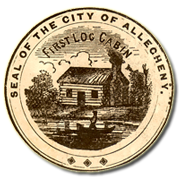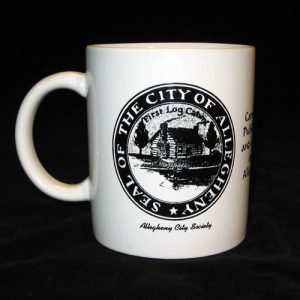The position of the Allegheny City Society on the Section 106 Process RE: Western Avenue / West Ohio Street Bridge Rehabilitation
For well over four decades the Allegheny City Society has had as its mission a commitment to preserving and interpreting the history of Allegheny City –the present North Side of Pittsburgh. From the very beginnings of our organization we have taken on a commitment to tell the story of the Allegheny Commons, which was established as common land for the residents in the surrounding communities in 1787. In recent years the Society, adhering to our Mission, has funded rehabilitative work on several of the historic monuments located within this park. In addition, from the outset of the Allegheny Commons Initiative in the late 1990s, we have participated in all efforts to restore this historic treasure.
The Society has frequently told the story of the advent of the rail lines that run through the Commons, and how the city leaders sought to have the track lowered so that the trains traversing through the Commons would have little impact on the surrounding park land. The Allegheny Commons is a city Historic District, as are most of the neighborhoods adjacent to the park. It is for these reasons that we have been participating in the Section 106 discussions related to the demolition, repairing or rebuilding of the bridges that cross the railroad lines at Western Avenue, Ridge Avenue, and the intersection of Brighton Road and North Avenue.
There are several points that we think need to be addressed by all parties to these discussions:
1) The bridge that crosses the RR at Western Ave was at one time a very significant bridge in that Western Avenue was the main East/West route through the lower North Side. It carried the vehicular traffic along what was Route 28, connecting the West End Bridge with the Allegheny River valley. With the opening of Interstate 279 all of that heavy traffic can be diverted away from Western Avenue on to the Interstate system. The bridge on Western Avenue should be used only for lightweight vehicles that serve local needs. If indeed the bridge is in poor condition, it should be repaired and not replaced. Also, such repairs should be in keeping with the present clearances for rail traffic. A repaired bridge with clearly defined weight limits might be the best answer to addressing the needs of this bridge.
2) At several public meetings the issue of raising the height of the Western Avenue bridge by several feet has been proposed. Such transformation of the landscape of the Commons would be working counter to all of the attempts by the City of Pittsburgh, the Allegheny Commons Initiative, organizations such as ours, and the citizens who live nearby. The impact of raising the height of the bridge would not only have a negative impact on the historic park, but it would also raise safety issues related to the movement of pedestrian traffic along the sidewalks surrounding the Commons.
3) What seems so bewildering to us is the fact that there are three bridges that we have been told lack the 22 foot clearances desired by the railroads. However, the city has said that it and the railroads have come to some sort of an agreement to waive this height clearance for the bridge that exists at the intersection of Brighton Road and North Avenues. We can not understand then why a similar agreement can not be arranged for the Western Avenue bridge. It would indeed be foolish to raise the height of only one bridge if indeed no rail traffic will be coming along those lines that requires a clearance greater than what presently exists. We urge you to consider plans for rehabilitating (reparing) the Western Avenue bridge with the present height above the tracks.
4) It is clear to all parties in the discussions that the condition of the bridge at Brighton Road and North Avenue will require considerable attention within the next few years. If that bridge were to be raised to the heights suggested in discussions related to the Western Avenue bridge the impact on the Commons, the communities of the Central North Side and Allegheny West would be catastrophic. Both of the neighborhoods have National and City historic designation. Any and all plans to significantly alter the bridge at that intersection would need to factor in a great number of issues. It is doubtful that what ever is built or refurbished there will have the required clearances. The alternative, of course, would be to lower the tracks.
It is the position of the Allegheny City Society that no bridges should be rehabilitated with higher clearances for rail traffic until plans have been made for both sites: Western Avenue and Brighton Road and North Avenue. In the meantime, we would urge the city to seek plans for repairing the Western Avenue bridge and incorporate into this plan a bridge that would greatly limit the weight of vehicular traffic that would cross it, thereby giving the repaired bridge a greater lifespan.
The Executive Committee, Allegheny City Society





